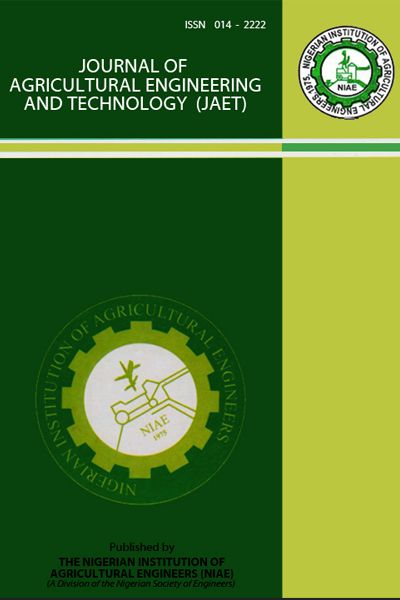EFFECT OF DRYING VARIABLES ON THE OPTIMUM PERFORMANCE OF A CENTRIFUGAL PALM NUTS CRACKER USING DURA CULTIVAR: A RESPONSE SURFACE METHODOLOGY APPROACH
Keywords:
Dura palm nuts, optimization, biomass fired forced- convection dryer, centrifugal cracker, cracking efficiencyAbstract
The crude method of cracking Dura palm nuts cultivar was fully mechanized by adopting newly developed drier and modified cracker to enhance productivity. The effect of drying variables on the Dura palm nuts cracking operation was established through the performance evaluation of the modified cracker. The modifications involved replacement of low-carbon steel material of beater and racking rings to high-carbon steel with application mechanical balancing to eliminate thrown forces. The Box- Behnken rotatable design was employed to generate 20 runs of the experiment. The Response Surface Methodology (RSM) was adopted to optimize the performance of the machines, and validated using desirability plots. The results of actual and predicted RSM plots confirmed run 12th as the optimum run having drying period (21 h), drying temperatures (60 oC), and age of the palm tree (35 years). The desirability plots validated these results with variables values of 21.37 h (drying period), 63.26 oC (drying temperature), and age 35 yrs. The run 12th had corresponding responses of cracking efficiency, un-cracked percentage, damage percentage, and final moisture content of 96%, 3%, 1%, and 10.2%, respectively


